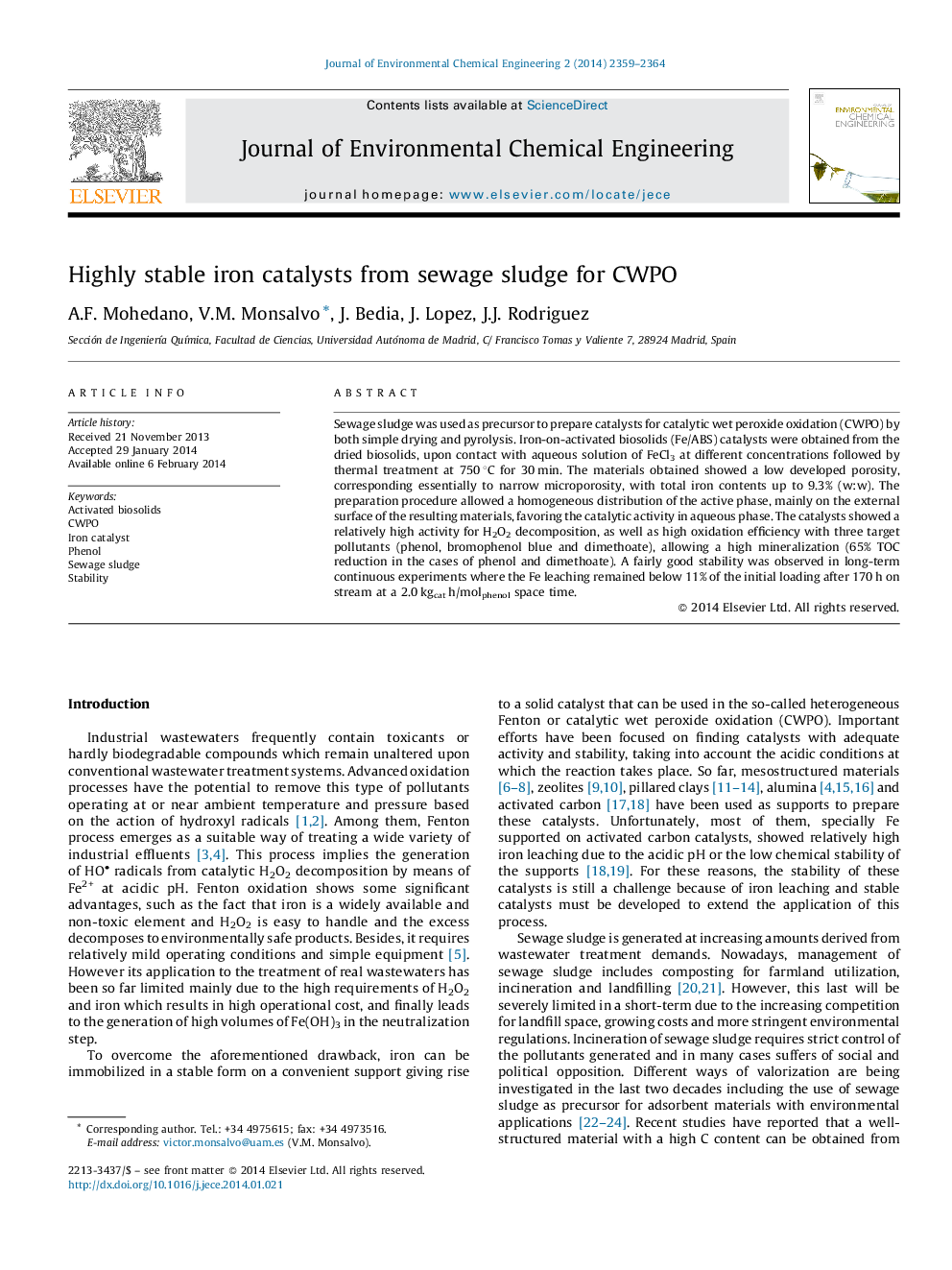| Article ID | Journal | Published Year | Pages | File Type |
|---|---|---|---|---|
| 221794 | Journal of Environmental Chemical Engineering | 2014 | 6 Pages |
•Simple and economic procedure for synthesizing an iron-on-activated biosolids catalyst from dried sewage sludge.•Fe/ABS catalysts were very active and stable for CWPO of three model pollutants.•Fe leaching was very low in batch and continuous tests.•The stability of Fe/ABS catalyst was verified in long-term continuous experiments.
Sewage sludge was used as precursor to prepare catalysts for catalytic wet peroxide oxidation (CWPO) by both simple drying and pyrolysis. Iron-on-activated biosolids (Fe/ABS) catalysts were obtained from the dried biosolids, upon contact with aqueous solution of FeCl3 at different concentrations followed by thermal treatment at 750 °C for 30 min. The materials obtained showed a low developed porosity, corresponding essentially to narrow microporosity, with total iron contents up to 9.3% (w:w). The preparation procedure allowed a homogeneous distribution of the active phase, mainly on the external surface of the resulting materials, favoring the catalytic activity in aqueous phase. The catalysts showed a relatively high activity for H2O2 decomposition, as well as high oxidation efficiency with three target pollutants (phenol, bromophenol blue and dimethoate), allowing a high mineralization (65% TOC reduction in the cases of phenol and dimethoate). A fairly good stability was observed in long-term continuous experiments where the Fe leaching remained below 11% of the initial loading after 170 h on stream at a 2.0 kgcat h/molphenol space time.
Graphical abstractFigure optionsDownload full-size imageDownload as PowerPoint slide
